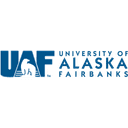This course is part of Resilient Energy Systems for Sustainable Communities.
This research-based course provides practical tools and knowledge for implementing resilient renewable energy systems in Arctic communities. Participants explore the interconnections between food, energy, and water (FEW) security, focusing on microgrid solutions and sustainable infrastructure. The course combines theoretical frameworks with real-world applications, examining various renewable energy technologies including solar, wind, geothermal, and hydroelectric facilities, while considering the unique challenges of Arctic and subarctic regions.
Instructors:
English
English
What you'll learn
Analyze food energy and water systems in Arctic communities
Evaluate renewable energy technologies for remote locations
Assess community well-being through FEW security metrics
Create energy assessments using renewable resource data
Develop sustainable infrastructure solutions for cold regions
Skills you'll gain
This course includes:
PreRecorded video
Graded assignments, Exams
Access on Mobile, Tablet, Desktop
Limited Access access
Shareable certificate
Closed caption
Get a Completion Certificate
Share your certificate with prospective employers and your professional network on LinkedIn.
Created by
Provided by

Top companies offer this course to their employees
Top companies provide this course to enhance their employees' skills, ensuring they excel in handling complex projects and drive organizational success.





There are 4 modules in this course
Through a comprehensive curriculum, students explore the current state of food, energy, and water systems in rural Alaska, with broader applications to Arctic regions. The course covers renewable energy technologies, community well-being assessments, and decision-making methodologies for resource management. Participants learn to analyze data, create energy assessments, and develop community-level recommendations using real-world examples and practical tools.
Life in Alaska
Module 1
Energy Nuts & Bolts
Module 2
Community Well-Being
Module 3
Making Decisions
Module 4
Fee Structure
Individual course purchase is not available - to enroll in this course with a certificate, you need to purchase the complete Professional Certificate Course. For enrollment and detailed fee structure, visit the following: Resilient Energy Systems for Sustainable Communities
Instructors

2 Courses
Distinguished Environmental Engineer and Academic Leader
Dr. Bill Schnabel serves as Dean of the College of Engineering and Mines at the University of Alaska Fairbanks, where he also holds tenure as a Professor of Environmental Engineering in the Department of Civil and Environmental Engineering. His academic journey includes a BS in Chemistry from Purdue University, an MS in Environmental Engineering from the University of Iowa, and a PhD in Environmental Systems Engineering from UAF. His extensive career at UAF has included roles as Director of the Institute of Northern Engineering, Director of the Water and Environmental Research Center, and Associate Dean before becoming Dean in January 2019. His research interests encompass food-energy-water system dynamics, arctic/subarctic infrastructure planning, cold-region hydrologic processes, water quality, road construction, and renewable energy. Prior to his academic career, he gained valuable industry experience as a Senior Project Engineer at Golder Associates and as a Project Engineer at Ecolotree Incorporated, bringing practical expertise to his academic leadership role. Under his leadership, the college has launched innovative programs including a new energy resource engineering bachelor's program, demonstrating his commitment to advancing Alaska's role in energy innovation.

1 Course
A Distinguished Expert in Arctic Energy Systems and Sustainability
Daisy Huang serves as Associate Professor of Energy at the University of Alaska Fairbanks, where she has established herself as a leading expert in renewable energy applications for Arctic environments. After earning her BS in Mechanical Engineering from UC Berkeley, MS from Santa Clara University, and PhD in Mechanical Engineering from UAF in 2013, she combines academic expertise with seven years of industry experience designing mechanical components in Silicon Valley's semiconductor and power control industries. Her research spans multiple areas including biomass energy, microgrids, power systems integration, and the food-energy-water security nexus. Living in a dry cabin in Fairbanks has given her unique insights into extreme heating requirements and high energy costs, driving her work on increasing energy efficiency and developing local renewable energy sources. Beyond her primary research, she contributes to energy education and workforce development while maintaining active projects in solar, wind, and thermal management systems. When not advancing Arctic energy solutions, she enjoys outdoor activities including skiing, hiking, and backpacking, as well as spending time with her retired sled dogs.
Testimonials
Testimonials and success stories are a testament to the quality of this program and its impact on your career and learning journey. Be the first to help others make an informed decision by sharing your review of the course.
Frequently asked questions
Below are some of the most commonly asked questions about this course. We aim to provide clear and concise answers to help you better understand the course content, structure, and any other relevant information. If you have any additional questions or if your question is not listed here, please don't hesitate to reach out to our support team for further assistance.



